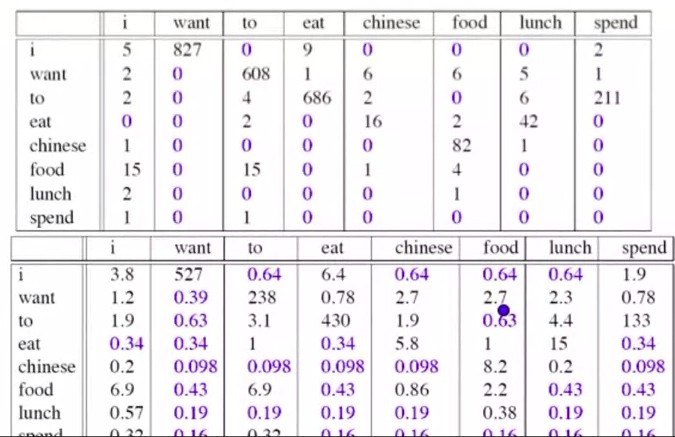From the previous blog, I know that there are a lot of zero, which will trigger many questions, such as unpredictability in test data, unavailability of preplexity. So, now we introduce the method smoothing.
previous : P(wi | wi-1) = c(wi-1, wi) / c(wi)
using smoothing: P(wi | wi-1) = ( c(wi-1, wi) + 1 ) / (c(wi-1) + V)
Then we can ensure that the p will not be zero. Now we can estimate this mothed.
We can use the Reconsitituted formula: c(wi-1, wi) = P(wi | wi-1) * c(wi-1) = ( c(wi-1, wi) + 1 ) / (c(wi-1) + V) * c(wi-1).
By using this formula, we can gain the the difference between them as following.

So add-one smoothing makes massive changes to our accounts. In other word, add-one estimation is a very blunt instrument. So in practice we don't actually use add-one smoothing for n-grams. we have better methods. But we do use add-one smoothing for other kinds of NLP models such text classification, or it will be used in similar kinds of domain where the number of zeros isn't so enormous.





 浙公网安备 33010602011771号
浙公网安备 33010602011771号